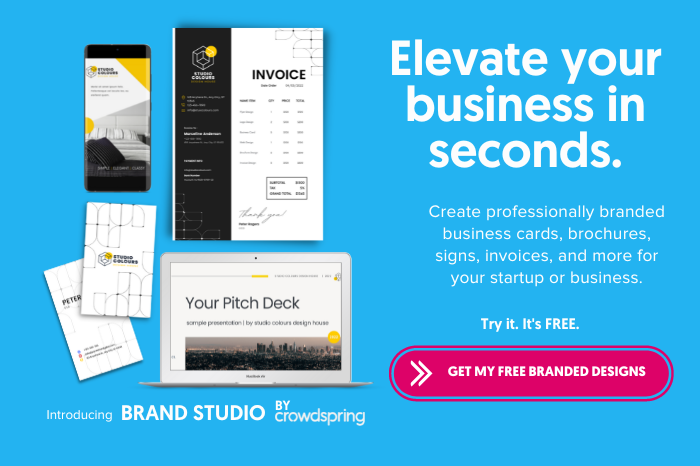
There’s a high probability that a brand archetype subconsciously influenced your latest buying decisions.
Brand archetypes influence nearly all consumers. According to Gerald Zaltman, a Harvard Business School professor, 95% of people’s purchasing decisions occur in the subconscious mind.
Your business can take advantage of this phenomenon. Brand archetypes are one of the most potent ways your brand can tap into your consumers’ subconscious minds.
What is a brand archetype?
Brand archetypes are human character traits that most accurately reflect a brand. There are twelve brand archetypes: The Outlaw, Creator, Magician, Hero, Lover, Jester, Everyman, Caregiver, Ruler, Innocent, Sage, and Explorer.

The brands that people have the strongest bonds to – Nike, Apple, Amazon, Tesla – have clearly defined archetypes reflected in their branding – from visual design, messaging, tone of voice, and even their products and services.
Let’s look at what brand archetypes are, review examples of brand archetypes among the world’s best brands, and explore how you can use the power of brand archetypes for your brand.
The 12 Brand Archetypes:

Before we look at each archetype and ways you can leverage them in your brand strategy, let’s briefly look at a brief history of archetypes.
Archetypes are as old as the art of storytelling.
Humans love storytelling, which is why archetypes resonate powerfully with people.
While the earliest explorations of archetypes occurred centuries ago through the Greek philosopher Plato, archetypes as a psychological concept were later introduced in modern history by the Swiss psychiatrist and psychoanalyst Carl Jung.
Jung believed that humanity shares a “collective unconscious.” Because of this, people are born with the same instincts and subliminal understanding of behavioral patterns that they recognize immediately as they see them.
Archetypes, according to Jung, were people’s inborn tendencies that play a role in influencing human behavior.
And in this regard, this is how archetypes became templates of timeless characters that every human knows.
And that’s why whether we’re told a story of a hero’s epic journey, an outlaw’s defiance of authority, or a ruler’s conquest, archetypes are characters in the stories we all instinctively understand.
The archetype model used in branding and marketing was first introduced in the book “The Hero and the Outlaw: Building Extraordinary Brands Through the Power of Archetypes” by Margaret Mark and Carol Pearson.
Mark and Pearson suggested that archetypes are essential in branding “because they convey a meaning that makes customers relate to a product as if it were alive in some way, they have a relationship with it and care about it.”
In this regard, brand archetypes help build a brand that audiences recognize at a profound and enduring level.
Moreover, when it comes to standing out in a crowd, differentiation strategies can be a dime a dozen and are rarely effective once used by another brand.
On the other hand, personalities have infinite possibilities and provide businesses with more room to work with. They’re unique and can be memorable.

1. The Outlaw Archetype
The Outlaw is the harbinger of change. They are your rebels with a cause.
That cause is to challenge the status quo.
Outlaws disdain rules, conformity, and a disregard for authority or anything that threatens their (or anyone else’s) freedom to choose.
While Outlaws are, at their very core, good, they are motivated mainly by anger and might resort to more disruptive or destructive ways of achieving their goals.
- Desire: Liberation
- Branding style: Criticize or denounce the status quo; disrupt and shock
- Ideal industries: Body art, automobile, alternative clothing
- Examples of Brands with the Outlaw Archetype: Virgin, Harley-Davidson, DocMartens, MTV
How to apply the Outlaw brand strategy
To appeal to customers with Outlaw archetypes, brands must first prove that they see the world as the Outlaw does: authority, conformity, and the mainstream are common enemies.
Outlaw brands must challenge societal norms and everyday habits in their marketing campaigns to connect with like-minded customers.
Avoid formality in the language and tone when communicating with them. Grit, attitude, and a devil-may-care approach to your marketing strategy – and in your visual designs like your company logo – will resonate best with this audience.
2. The Creator Archetype
The Creator is the champion of imagination and self-expression. They are driven by their need to build exceptional and enduring creations.
This archetype values design and aesthetics.
They must express themselves with their talent and strive to bring their vision to life through that expression. Creators believe that if you imagine it, you can create it.
- Desire: Innovation, self-expression
- Branding style: Unlocking one’s imagination, the pursuit of originality
- Ideal industries: Arts and design, information technology, marketing
- Examples of brands with the Creative Archetype: Adobe, LEGO, Pinterest
How to apply the Creative brand strategy
The Creator type of audience is not a big fan of traditional advertising, mediocre products, and existing features.
These people are willing to pay a premium for products that inspire creativity and help them express themselves in the best possible way.
To appeal to a creator, you have to celebrate the creative process and inspire self-expression.
Brand messaging should stir the desire for the creative process and inspire customers to express their nature to the best of their ability.
Brands must constantly experiment with new solutions, products, and designs and focus on delivering extraordinary experiences.
Creator brands tend to have loyal followers because they often inspire their customers to be better creatives.
3. The Magician Archetype
The Magician is charismatic, clever, and dynamic.
The Magician is driven to make dreams come true through mystical ways. They can take people on a journey of transformation through the experience of a magical moment.
They are deep thinkers and are regarded as trusted advisors.
- Desire: Power
- Branding style: Wonder and mysticism; transformation
- Ideal industries: Beauty, entertainment, relaxation, health and wellness
- Examples of Brands with the Magician archetype: Walt Disney, Polaroid, MAC Cosmetics, Dyson
How to apply the Magician brand strategy
The Magician archetype doesn’t settle on a singular buyer persona. However, it appeals to other personas because of its ability to transform.
Brands that provide a product or service that takes their customers on a transformational journey (worn out to new; lost to found) could reasonably consider the Magician archetype as the personality to connect with their audience.
For example, resorts, theme parks, or spa retreats can use this archetype to attract customers seeking an escape from stress or the mundane by promising a magical, transformative time.
4. The Hero Archetype
The Hero is society’s savior and redeemer. Characterized by courage, self-sacrifice, and achievement, the Hero seeks personal transformation in its quest to triumph over adversity.
The Hero’s primary motivation is to prove their worth through courage and determination.
They work hard to have the required skills and take pride that their work rate sets them apart from the rest.
They must meet challenges head-on and carry out defeats or failures until they are corrected.
The Hero wants to save the day to prove their worth to themselves, so the world knows of their ability.
- Desire: Mastery
- Branding style: Be stronger and better
- Ideal industries: Sports apparel, sports equipment, trade services
- Examples of Brands with the Hero archetype: Nike, Under Armour, Gatorade, FedEx
How to apply the Hero brand strategy
A Hero brand’s most important asset is inspiring messaging and content that taps into their customers’ ambitions and helps them take action.
Hero brands benefit significantly from using high-achievers that customers can relate to as the face of their brand.
This is what sports brands like Nike and Adidas do when they use athletes such as LeBron James and David Beckham in their advertising campaigns.
5. The Lover Archetype
The Lover has an affection for the beautiful and a penchant for blissful experiences, both sensual and nurturing.
The Lover desires to be desired. They are motivated to become more physically and emotionally appealing to increase their capacity to attract others.
- Desire: Intimacy
- Branding style: Affirmation of beauty or value; VIP treatment
- Ideal industries: Fragrance, cosmetics, wine, luxury food, and travel
- Examples of Brands with the Lover archetype: Chanel, Hallmark Godiva, Tiffany, and Co.
How to apply the Lover brand strategy
Meaningful, intimate relationships—whether between partners, family members, or friends—is central to the Lover archetype.
Brands wishing to appeal to a Lover type of audience segment should create messaging that makes customers feel loved by not only the others around them but also by themselves.
To appeal to a Lover, you need to make them feel attractive or stir their passionate desires for connection and intimacy. You can see this, among other places, in the website design of the brands that reflect this archetype.
Because of their attraction to sensory pleasure, communication and messaging should use sensual (not sexual) language and tone. Brands can leverage their audience’s desire for sensual pleasure through sight, sound, smell, or touch.
6. The Jester Archetype
The Jester is all about having fun and living in the moment. They not only love having fun themselves, they see it as their duty to be a ray of sunshine in everyone’s life around them.
The Jester can sometimes be a trickster who mocks convention using wit and humor. Most of the time, the humor can be self-effacing and satiric.
- Desire: Enjoyment, fun
- Branding style: Humor, promoting the “good times”
- Ideal industries: Kids’ entertainment, beer brands, confectionary
- Examples of Brands with the Jester archetype: Nickelodeon, Dollar Shave Club, M&Ms, Geico
How to apply the Jester brand strategy
Like Magicians, Jesters are rarely a buyer persona but can be a perfect archetype for brands in the business of entertaining or wanting to associate themselves with good times.
Regardless of archetype and personality, everyone likes to laugh. Provided the context and the timing is correct, the Jester personality can be a unique and loving point of differentiation.
As the Jester Archetype, your brand should highlight life’s light-hearted and positive side with a playful and entertaining spirit. Brands that can connect with their audience through happiness and laughter can become much-loved brands.
7. The Everyman Archetype
The Everyman, above all, wants to belong.
They tend to blend into society as ‘everybody” and don’t like to stand out in the crowd. They’re friendly and easy to talk to without being overly funny, rude, or excessively loud.
They lend their trust easily though they fear being rejected.
They are relatively positive and strive to fit into the group.
- Desire: Belonging
- Branding style: Create an inclusive and welcoming community, align with core values
- Ideal industries: Home/family life, comfort foods, daily apparel
- Examples of Brands with the Everyman archetype: Target, Gap, eBay, Walmart, Ikea
How to apply the Everyman brand strategy
To appeal to an Everyman, you need to make them feel a sense of belonging. Brands that revolve around everyday activities might use this archetype to message that it’s ok to be normal.
Home or family life brands fit this archetype perfectly, while elitist positioning or “we’re better” messaging would be a turnoff.
To appeal to the typical person, Everyman brands need to be friendly and down-to-earth. Their target audience fears rejection or being singled out from the rest.
For these brands, adopting a cost leadership strategy can be highly rewarding. While it can be hard to differentiate an Everyman brand from the competition, it’s not a big deal if you continuously produce high-quality, affordable products that customers find value in.
8. The Caregiver Archetype
The Caregiver is a selfless personality driven by the desire to protect and care for others, especially those in need.
They are often maternity figures and take those who need care under their wing until they are stronger to take care of themselves.
Caregivers are not just reactive; they are also preventative and tend to be in and around an event of harm, before or after.
- Desire: Service
- Branding style: Others before self; for the greater good
- Ideal industries: Healthcare, education, hospitals, non-profits
- Examples of Brands with the Caregiver archetype: World Wildlife Foundation, Unicef, Pampers
How to apply the Caregiver brand strategy
The Caregiver archetype is a perfect fit for brands that help those in need. The people such brands help are often vulnerable and sensitive and require a soft touch. A warm, thoughtful, generous, and motherly approach offers a feeling of safety that will appeal to their needs.
Caregiver brands always put their customers first, and this needs to reflect in everything — from their products and packaging to advertisements and overall brand voice.
The Caregiver’s target audience relies on them for compassion and support. This is why they’re likely to respond to marketing campaigns incorporating emotional elements or showing empathy towards their lifestyle.
9. The Ruler Archetype
The Ruler desires control above all else and is a dominant personality.
They are authoritative in their communication and actions and possess a sense of intimidation.
Their goal is for prosperity and success and for that prosperity to trickle down to those loyal to his rule.
They are confident, responsible, and in control of their lives and expect the same from others.
Rulers see themselves at the top of the food chain and aggressively defend that position.
- Desire: Freedom, liberation
- Branding style: Demonstrate dominance and leadership
- Ideal industries: Finance, luxury/high-end products and services, hotels, formal wear
- Examples of Brands with the Ruler archetype: Rolex, Rolls-Royce, Mercedes Benz, American Express
How to apply the Ruler brand strategy
To appeal to a Ruler, you must reaffirm their sense of power, control, and respect. Rulers want to feel a sense of superiority and that they are part of an exclusive club.
Appealing to the masses will not get the Ruler’s attention and would likely turn them off. Ruler brands must provide their customers with a sense of re-affirmation that they are at the top of the ladder of success and are part of an exclusive club.
10. The Innocent Archetype
The innocent is an upbeat personality with an optimistic outlook on life.
They crave safety but ultimately want themselves and everyone else to be happy.
They are honest and pure and have no ill will towards anybody. They don’t hold grudges and believe everyone has the divine right to be who they indeed are.
They see beauty in everyone and have a knack for seeing inner beauty that others don’t.
- Desire: Safety
- Branding style: Positivity, feel-good messaging, promote wholesome values
- Ideal industries: Skincare/beauty, natural/organic products
- Examples of Brands with the Innocent archetype: Ivory, Dove, Whole Foods, Biossance
How to apply the Innocent brand strategy
To appeal to an innocent, you need to earn their trust with straightforward, honest, and most importantly, positive communication. Negative or guilt-based communication is a complete turnoff.
They need to associate your brand with safety and will feel a connection when their inner beauty is recognized.
Innocent brands tend to embrace an all-natural approach in their messaging — no pretension.
Innocent archetype customers value simple solutions, so avoid confusing jargon or discussing complicated ingredients and features.
Honesty and transparency are essential to Innocent customers. Brands targeting this type of audience should let these values influence their vision, mission, products, services, and messaging.
11. The Sage Archetype
The Sage is a seeker of truth, knowledge, and wisdom. Their drive comes from the desire to understand the world and to share that understanding with others.
They are lifelong learners and enjoy expressing their knowledge through philosophical conversations. They are more likely to pass on their wisdom to someone who can use it to change the world rather than change it themselves.
- Desire: Freedom, liberation
- Branding style: Celebrate life-long learning,
- Ideal industries: Media/news networks, universities, research foundations
- Examples of Brands with the Sage archetype: Harvard, The Mayo Clinic, The Smithsonian
How to apply the Sage brand strategy
To appeal to a sage, you must pay homage to their intelligence as you communicate.
Higher-level vocabulary with layered or philosophical meaning will be acknowledged and appreciated, while oversimplified or dumbed-down messages will not.
They expect factual and well-researched information, which should be watertight to avoid challenges.
12. The Explorer Archetype
The explorer has a palpable inner drive to push themselves outside their comfort and conformity of everyday life into the rugged environment.
They are brave, adventurous, and love a challenge. The challenges are more about understanding themselves than proving themselves to others.
Explorers are on an endless journey of discovery.
- Desire: Freedom
- Branding style: Celebrating exploration and adventure
- Ideal industries: Automobiles (SUV), adventure travel, outdoor apparel, and equipment
- Examples of Brands with the Explorer archetype: NatGeo, Patagonia, Jeep, Subaru, NASA
How to apply the Explorer brand strategy
To appeal to an explorer, you need to challenge them.
Challenging modern life’s confines will allow you to resonate with them quickly.
You should promote the outdoors and the unknown as the land of the free and challenge them to explore it, with your brand, of course.
Modern society is the common enemy in which many explorers live. A stand against society can go a long way to resonating with the explorer and evoking their desires.
People don’t want information. They want to be taken on a journey.
Archetypes in branding are not simply about mirroring the personality of your audience.
It’s about identifying the desire that you want your brand to evoke and using that desire to define your personality.
With so much noise in any market, only brands that connect on a human level can garner a loyal following.
There is no better way to connect on a human level than with a human personality.
Brand Archetypes are a tool that can help you differentiate your brand, give it a depth of personality and use it to truly connect with your audience, so they begin to feel something for you.
Make sure you understand your brand, what it stands for, and where it’s going.
Because when brands know where they’re going, people will follow.

Interested in other types of businesses or how-to guides? Here are our comprehensive guides:
How to Start a Business: The Complete Step-by-Step Guide to Starting a Business in 2022
How to Write a Business Plan (2022)
Branding: The Definitive Guide for 2022
The Definitive Guide to Successfully Rebranding in 2022
What is Brand Identity? And How to Create a Unique and Memorable One in 2022
The Ultimate Small Business Guide to Brand Equity in 2022
Brand Archetypes and How They Can Help Your Business: The Definitive Guide
The Definitive Small Business Guide to Brand Pillars in 2022
The Complete Guide on How to Name a Business
Brand Strategy 101: How to Create an Effective Branding Strategy [GUIDE]
The Definitive Content Marketing Guide
Social Media Marketing: The Ultimate Small Business Guide for 2022
Small Business Guide to Lifecycle Email Marketing: How To Grow Your Business Faster
The Ultimate Guide to Using Twitter for Business in 2022
YouTube Marketing: The Complete Small Business Guide 2022
Instagram Marketing: The Ultimate Small Business Guide for 2022
How to Use LinkedIn: The Ultimate Small Business Marketing Guide
The Ultimate Small Business Guide to Marketing on TikTok
SMS Marketing: The Ultimate Small Business Guide [2022]
Public Relations Guide for Small Business (7 Proven PR Tactics)
How to Start a Consulting Business in 2022: The Complete Step-by-Step Guide
How to Start a Real Estate Business in 2022: Complete Step-by-Step Guide
How to Start a Trucking Business in 2022: The Complete Guide
How to Start a Property Management Company
How to Start a Successful Online T-Shirt Business in 2022: The Definitive Guide
How to Start an eCommerce Business: A Step-by-Step Guide To Take Your Business Online (2022)
Nonprofit Branding: Complete Guide to Building a Strong Nonprofit Brand in 2022
How to Start a Cleaning Business in 2022: The Complete Guide
6 Businesses You Can Start For Less Than $1,000
Marketing Psychology: What You Must Know To Supercharge Your Marketing
What is a DBA and How to File One For Your Business
How to Start a Clothing Line or Clothing Brand From Scratch in 2022: The Definitive Guide
How to Start a Brewery Business in 2022: The Complete 9 Step Guide
How to Start a Medical Marijuana Dispensary Business in 2022
How to Start an Etsy Shop: Your Comprehensive, No-Stress Guide to Starting an Etsy Shop in 2022
How to Start a Photography Business in 2022: The Complete Step-by-Step Guide
How to Start a Business in Texas: The Complete Step-by-Step Guide (2022)
The Definitive Guide to Creating a Compelling Visual Brand for Your Restaurant in 2022
Conversion Rate Optimization (CRO) Guide: How to Make Your Website Work Smarter (2022)
Facebook Messenger Chatbot Marketing: The Definitive Guide (2022)
Branding for Food Trucks: The Definitive Guide (2022)





More Stories
Retail Tax Franchises or Online Tax Software?
Franchising – A Retirement Plan Or Prison Sentence?
Why Do We Need Computer Training?